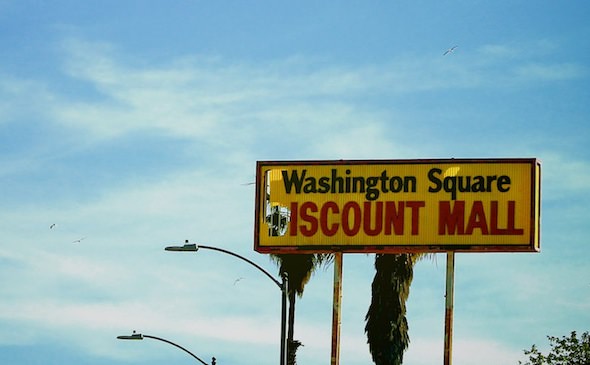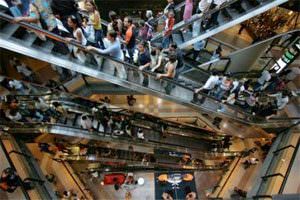The Growing Irrelevance of the American Mall
Guardian contributor David Uberti discusses the ebb of the icons of consumerism as he steps past "ripped-out electrical wires … suspended in the stale air and fading wallpaper" peeling "like dead skin" in one ruined structure in Akron, Ohio.
Guardian contributor David Uberti discusses the ebb of the icons of consumerism as he steps past “ripped-out electrical wires … suspended in the stale air and fading wallpaper” peeling “like dead skin” in one ruined structure in Akron, Ohio.
Uberti reports:
Dying shopping malls are speckled across the United States, often in middle-class suburbs wrestling with socioeconomic shifts. Some, like Rolling Acres, have already succumbed. Estimates on the share that might close or be repurposed in coming decades range from 15 to 50%. Americans are returning downtown; online shopping is taking a 6% bite out of brick-and-mortar sales; and to many iPhone-clutching, city-dwelling and frequently jobless young people, the culture that spawned satire like Mallrats seems increasingly dated, even cartoonish.
According to longtime retail consultant Howard Davidowitz, numerous midmarket malls, many of them born during the country’s suburban explosion after the second world war, could very well share Rolling Acres’ fate. “They’re going, going, gone,” Davidowitz says. “They’re trying to change; they’re trying to get different kinds of anchors, discount stores … [But] what’s going on is the customers don’t have the fucking money. That’s it. This isn’t rocket science.”
Shopping culture follows housing culture. Sprawling malls were therefore a natural product of the postwar era, as Americans with cars and fat wallets sprawled to the suburbs. They were thrown up at a furious pace as shoppers fled cities, peaking at a few hundred per year at one point in the 1980s, according to Paco Underhill, an environmental psychologist and author of Call of the Mall: The Geography of Shopping. Though construction has since tapered off, developers left a mall overstock in their wake.
Currently, the US contains around 1,500 of the expansive “malls” of suburban consumer lore. Most share a handful of bland features. Brick exoskeletons usually contain two storeys of inward-facing stores separated by tile walkways. Food courts serve mediocre pizza. Parking lots are big enough to easily misplace a car. And to anchor them economically, malls typically depend on department stores: huge vendors offering a variety of products across interconnected sections.
Read more here.
— Posted by Alexander Reed Kelly.
Your support is crucial...As we navigate an uncertain 2025, with a new administration questioning press freedoms, the risks are clear: our ability to report freely is under threat.
Your tax-deductible donation enables us to dig deeper, delivering fearless investigative reporting and analysis that exposes the reality beneath the headlines — without compromise.
Now is the time to take action. Stand with our courageous journalists. Donate today to protect a free press, uphold democracy and uncover the stories that need to be told.



You need to be a supporter to comment.
There are currently no responses to this article.
Be the first to respond.